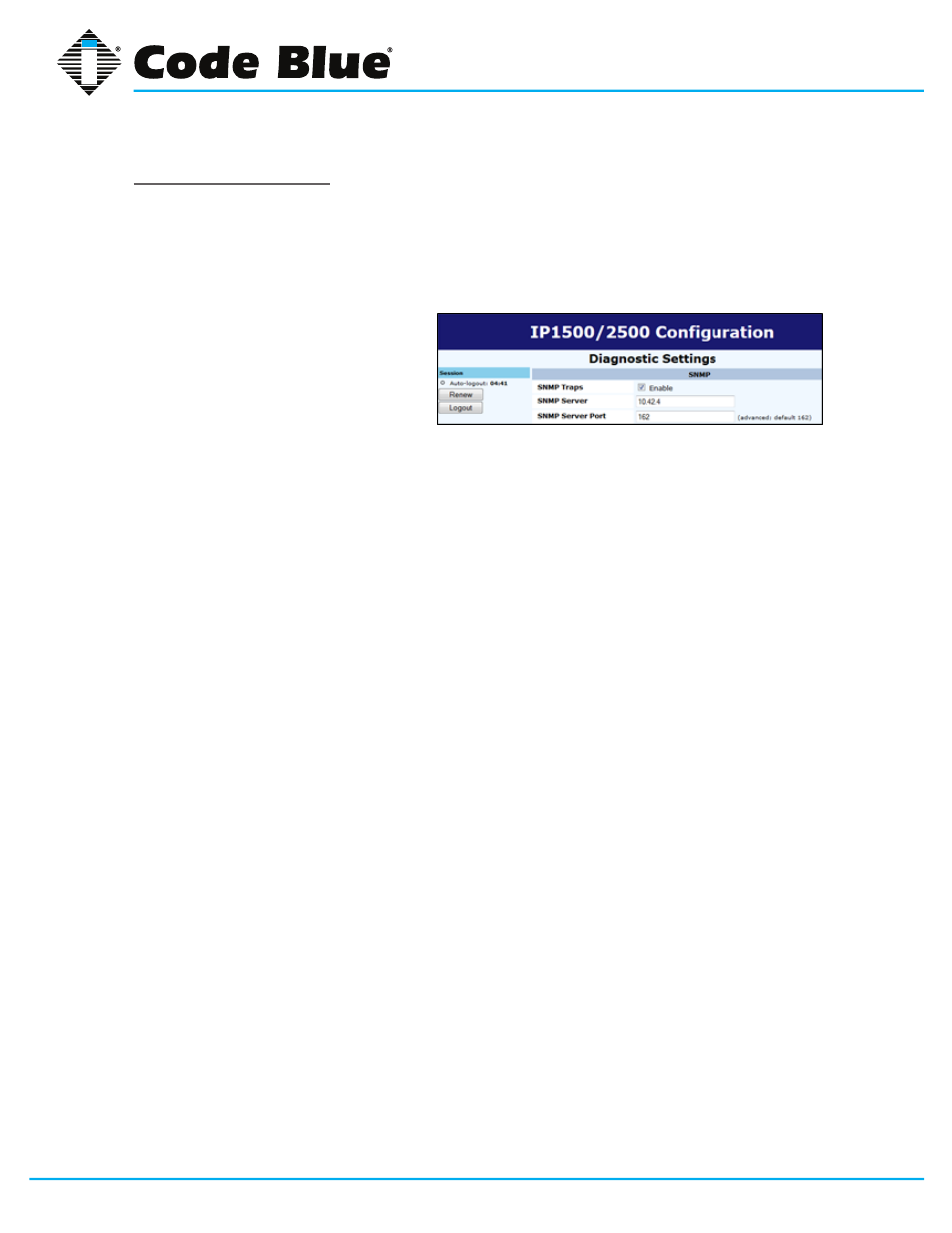Administrator guide – Code Blue IP1500 VOIP SPEAKERPHONE User Manual
Page 44

Code Blue
•
259 Hedcor Street
•
Holland, MI 49423 USA
•
800.205.7186
•
www.codeblue.com
GU-137-E
page 44 of 66
IP1500 and IP2500 Series
Administrator Guide
Configuring Diagnostics
Diagnostic Settings
The speakerphone diagnostic settings are configured by:
• Selecting
Diagnostic Settings in the Code Blue Configuration.
• Click the
Enable check box.
• Input the
SNMP Server IP address
and
SNMP Server Port number to
monitor the speakerphone with an
SNMP management software or with
Code Blue’s ToolVox Gateway, with
Unit Programming & Diagnostic (UPD) Software.
• PoE Power Failure: PoE power is the sole power source and if an interruption in service is expe-
rienced, no Trap will be sent due to loss of PoE energy. The PoE switch should alert you to PoE
switch state.
Others – (Tests)
Microphone testing is disabled by default, and enabling will show a number of reoccurring test
routines. The microphone is supported by the speaker’s ability to generate tones at the schedule
intervals.
• The test consists of beeps from the speaker, which will be received by the microphone.
The maximum number of beeps: 10 beeps
Once the microphone detects the beeps, the test is complete until the next scheduled test is
present.
The beep tone volume choices are soft, loud, or soft to loud.
Beep tone volume setting should be set to anticipate ambient noise level at the time of the
test.
• The test schedule choices are:
Every 15 minutes
Hourly
Daily
Weekly
Testing on demand: When microphone speaker testing is enabled, the administrator may select to
Run Test while logged into the speakerphone. The results of the test will only be present in a failed
SNMP trap, which would appear in the SNMP server logs or UPD Diagnostic Reports logs. The MIB
value is
CODEBLUE-MIB::micSpeakerFailure.
